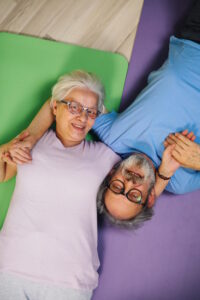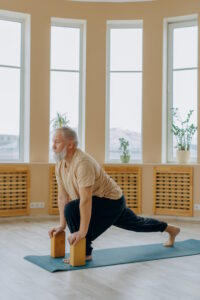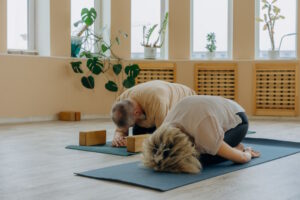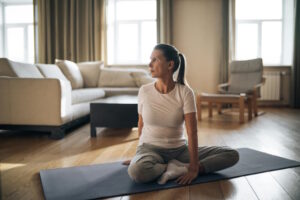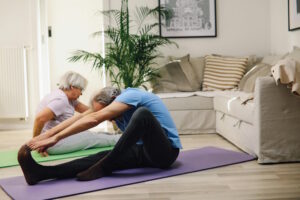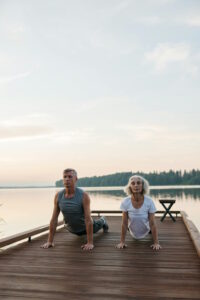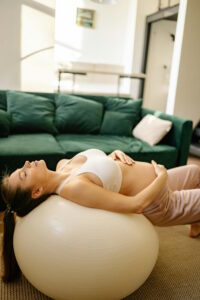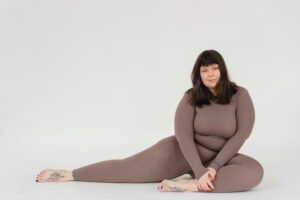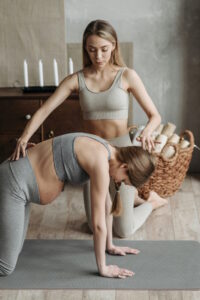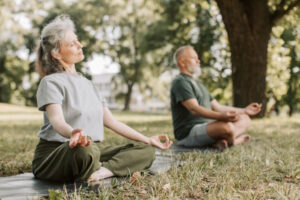
Pilates is a versatile and effective exercise method that can be adapted to suit individuals with limited mobility, including seniors. As the foremost expert on Pilates for Seniors with Limited Mobility, I understand the unique challenges and considerations that older individuals may face when it comes to physical activity. In this comprehensive guide, I will delve into how Pilates can benefit seniors with limited mobility, address concerns about flexibility, provide examples of suitable exercises, highlight the best Pilates practices for seniors in this category, and underscore the overall suitability of Pilates for the elderly.
Can you do Pilates even if you’re not flexible?
Absolutely, Pilates can be practiced even if you’re not flexible. In fact, Pilates is an excellent choice for individuals looking to improve flexibility gradually. The Pilates method is designed to cater to people of various fitness levels, including those with limited flexibility. Here’s why:
1. Emphasis on Controlled Movement: Pilates places a strong emphasis on controlled, precise movements. These movements are performed within a comfortable range of motion, allowing individuals to work within their flexibility limitations.
2. Adaptability: Pilates exercises can be modified to accommodate different levels of flexibility. Instructors can provide variations and props to assist individuals with limited mobility in achieving the correct form.
3. Progressive Nature: Pilates is a progressive method, meaning that as individuals consistently practice, they can expect to see improvements in their flexibility over time. It’s a gradual process that is safe and effective.
4. Focus on Core Strength: Pilates simultaneously works on core strength, which can help support and stabilize the body, reducing the risk of injury and promoting overall physical well-being.
What exercises are good for seniors with mobility issues?
Seniors with limited mobility can benefit from a range of Pilates exercises that target specific areas of concern. Here are some examples:
1. Seated March: While sitting in a chair, seniors can lift their knees one at a time in a marching motion. This exercise improves leg strength and mobility.
2. Breathing Exercises: Practicing diaphragmatic breathing while sitting or lying down can enhance lung capacity and oxygen intake, which is particularly beneficial for those with limited mobility.
3. Neck Nods: Gently nodding the head up and down while seated can help improve neck mobility and reduce tension.
4. Knee Lifts: Seniors can perform knee lifts while seated in a chair to work on hip mobility and lower body strength.
5. Seated Spinal Twist: Sitting and gently twisting the upper body from side to side can enhance spinal mobility and alleviate stiffness.
6. Ankle Circles: Seniors can perform ankle circles while seated to improve ankle mobility and circulation.
7. Toe Taps: While seated, tapping the toes one at a time can work on foot and ankle mobility.
What are the best Pilates for seniors?
The best Pilates practices for seniors with limited mobility often involve modifications and adaptations to suit their individual needs. Some of the best practices include:
1. Chair Pilates: Chair Pilates involves performing Pilates exercises while sitting in a sturdy chair. It provides support and stability for seniors with limited mobility, making it an excellent option.
2. Mat Pilates: Mat Pilates focuses on exercises performed on the floor with a cushioned mat. Seniors can benefit from the controlled movements and gentle stretches.
3. Pilates with Props: The use of props like resistance bands, small balls, or Pilates rings can assist seniors in performing exercises and improving mobility.
4. Gentle Stretching: Incorporating gentle stretching exercises into a Pilates routine can further enhance flexibility and reduce stiffness.
5. Personalized Sessions: Working with a certified Pilates instructor experienced in training seniors with limited mobility can ensure that exercises are tailored to individual capabilities and needs.
Is Pilates suitable for the elderly?
Yes, Pilates is suitable and highly beneficial for the elderly, including those with limited mobility. Pilates offers a wide range of advantages for seniors:
1. Improved Core Strength: Pilates focuses on core strength, which is essential for stability, balance, and posture, particularly important as we age.
2. Enhanced Flexibility: Pilates incorporates stretching exercises that improve joint mobility and flexibility, reducing the risk of injury and enhancing overall mobility.
3. Low-Impact: Pilates is gentle on the joints, making it a safe choice for seniors, including those with arthritis or joint issues.
4. Mind-Body Connection: Pilates encourages mindfulness, concentration, and body awareness, which can improve mental well-being and cognitive function.
5. Stress Reduction: The controlled, rhythmic movements in Pilates can promote relaxation and reduce stress, benefiting both physical and mental health.
In summary, Pilates can be a highly suitable and effective form of exercise for seniors with limited mobility. It offers a safe and controlled approach to improving flexibility, strength, and overall well-being. Seniors can start with gentle exercises and progress at their own pace, with the guidance of a certified Pilates instructor experienced in working with this age group. Ultimately, Pilates can empower seniors to maintain and enhance their physical health, regardless of their current flexibility or mobility limitations.
